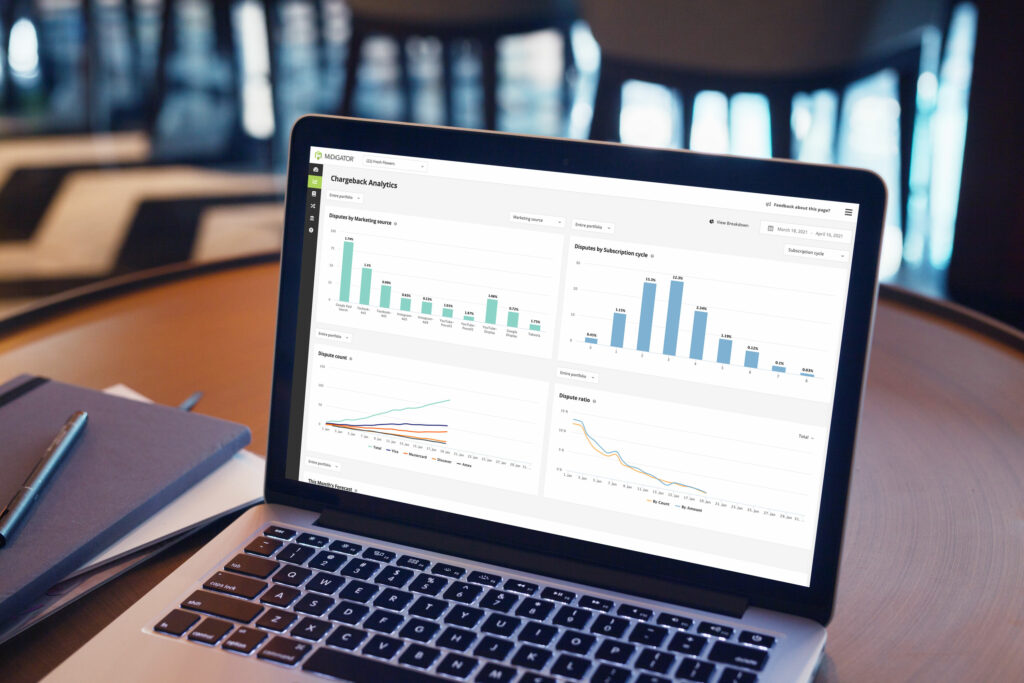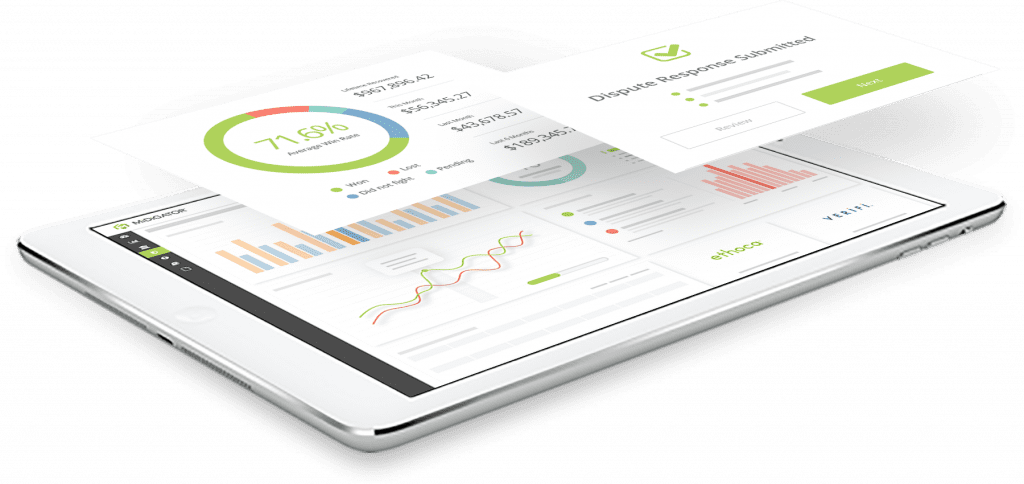Merchant account load balancing is the practice of using multiple payment processors to dilute risk or reduce chargebacks. Load balancing — which may also be referred to as volume distribution or transaction routing — is used to spread transactions across multiple merchant accounts to reduce the likelihood that any one account breaches card brand thresholds.
However, load balancing isn’t a safe or effective technique for your business. Because it’s a means of hiding — and not preventing — risky activity, load balancing may lead to penalties from card brands and even play a role in legal action taken against your business.
A WORD OF WARNING
Midigator® does not encourage or condone merchant account load balancing. If you’ve arrived at this article because you think load balancing might be a viable technique for your business, we advise you to reconsider. There are safe, compliant alternatives that will actually produce better results. If you’d like help preventing — instead of hiding — chargebacks, Midigator can help. Get in touch with our team of experts today, and we’ll help you establish an effective, long-lasting risk management strategy.
This detailed guide will explain how load balancing works and why some merchants might be tempted to try it. We’ll also outline safer alternatives and strategies to help you avoid threshold breaches without taking on the risks inherent with load balancing.
How Does Load Balancing Work?
Merchant account load balancing works by distributing transactions across different merchant accounts with different payment processors. This strategy reduces the likelihood of any one account incurring excessive chargebacks or a high chargeback-to-transaction ratio — which is a top priority for some merchants.
Breaching chargeback thresholds — or having activity that is near the limits — has consequences. In addition to paying additional fees and penalties, merchants could lose the ability to process payments altogether.
Thresholds vary depending on the card brand, processor, and business involved. However, merchants are usually expected to limit chargeback counts to 100 per month and maintain a chargeback-to-transaction ratio below 1%.
Because of these limits, load balancing could seem like a convenient way to avoid trouble.
For example, one account may record 50 chargebacks and attain a chargeback-to-transaction ratio of 0.6%, and another account may record 55 chargebacks and a chargeback-to-transaction ratio of 0.75%. On the other hand, if all that activity took place on a single account, the merchant would be way over the limit.
However, load balancing isn’t as great as it may appear. In fact, it could lead to the destruction of your business. This deceptive practice comes with severe consequences that are difficult or impossible to overcome.
Channel Segmentation: A Similar but Safe Technique
Channel segmentation is the practice of routing transactions to different MIDs or terminals based on the criteria you define.
Like load balancing, channel segmentation uses multiple merchant accounts. In contrast to load balancing, these merchant accounts are all provided by a single payment processor as opposed to multiple payment processors. In other words, you’re not creating a system of obfuscation — processors and acquirers may still track, record, and analyze your transaction.
Why Use Channel Segmentation?
Channel segmentation enables better accounting, analytics, organization, and more.
Consider the types of transactions your business processes on a day-to-day basis. Each type of transaction comes with varying degrees of risk or unique streams of data. Segmenting these transactions into distinct channels lets you more easily mitigate specific risks or collect and analyze relevant data.
Channel segmentation may be used to route transactions to different MIDs or terminals based on characteristics such as:
- Card-present vs. card-not-present transactions
- Digital goods vs. physical goods
- International sales vs. domestic sales
- Recurring purchases vs. one-time purchases
- Debit card vs. credit card purchases
- First-time vs. repeat customer purchases
When you consolidate similar transactions into their own accounts, you can better manage the unique risks associated with each individual characteristic. However, you aren’t hiding that risk like you would be with load balancing.
What Type of Merchants Might Consider Load Balancing?
Any merchant in any industry might be tempted to consider load balancing. However, the practice is usually most appealing to merchants with high-risk merchant accounts.
If a friend, colleague, or industry member is encouraging you to try load balancing, think again. Even if everyone else you know is using the technique, you don’t have to!
What Are the Consequences of Load Balancing?
Because load balancing helps to artificially avoid card brand limitations and bypass established requirements, engaging in the practice can lead to severe consequences for your business.
Consequences of load balancing may result in:
- Loss of your merchant account(s)
- Placement on the MATCH list
- Difficulty in applying for or opening new merchant accounts
- Non-compliance fines from card brands
- Legal and punitive actions taken by the FTC
- Business closure
In many ways, load balancing exemplifies a penny-wise, dollar-foolish mentality. It may save your business some money in the short term, but may cost you everything in the long term.
What Are the Alternatives to Load Balancing?
Load balancing isn’t your only option for preventing threshold breaches and avoiding penalties. Alternatives to load balancing offer safer and more effective methods of risk management.
Use chargeback prevention tools.

Start by adopting and implementing chargeback prevention software, such as Midigator.
Two solutions in particular will help you quickly reduce chargeback activity.
- Order validation (provided by Order Insight and Consumer Clarity) shares clarifying transaction information that empowers banks to “talk off” disputes.
- Prevention alerts enable you to refund disputed transactions before they become chargebacks.
You can compliment chargeback prevention solutions with fraud management technologies.
- Third-party vendors help you detect and block unauthorized transactions.
- Address verification service (AVS), card verification values (CVV), and 3D Secure 2.0 help verify the shopper’s identity.
Using multiple, complimentary solutions creates the most complete protection possible.
Analyze your data.

Data analysis helps you understand why customers are disputing their purchases. If you can uncover the hidden reason for chargebacks, you can stop them from happening.
When you analyze your data, you can make intelligent decisions based on answers to questions such as:
- Do transactions for digital goods result in more chargebacks than physical merchandise?
- Is the chargeback rate for recurring payments higher than for one-time payments?
- Are international customers filing chargebacks at a higher rate than domestic shoppers?
- Is a certain price point more susceptible to chargebacks than another?
- Do some marketing tactics cause more chargebacks than other techniques?
- Are your chargebacks ‘friendly’ fraud or malicious fraud?
This wealth of information helps you do more than just avoid an excessive chargeback rate. Analyzing data informs you of ways to optimize your business practices — improving the quality of your products, rewriting policies to be more customer-friendly, providing stellar customer service, and more.
Build a complete management strategy.

Not only are chargeback prevention techniques safer than load balancing, but they also yield a positive ROI — especially when combined with other solutions.
With the information collected by chargeback prevention software, you are better equipped to fight chargebacks and improve your win rate, resulting in less revenue loss.
Better still, chargeback management tools may be used in addition to channel segmentation. As a result, you can improve upon the benefits of channel segmentation with the proactive protection and analytics provided by intelligent chargeback technology.
How Can Midigator Help?
Merchant account load balancing may help you avoid high-risk merchant classification for a time but is itself a major risk to your business. Load balancing exposes your business to penalties far beyond those resulting from an excessive chargeback rate, potentially leading to the loss of your merchant account or the closure of your business entirely.
Instead, a safe, dependable, and comprehensive tool like Midigator can help you prevent and fight chargebacks. As part of a comprehensive chargeback management strategy, Midigator can help protect your revenue and stay within compliance of card brands, acquirers, and processors.
Sign up for a demo today to learn how easy it can be to create and maintain a comprehensive chargeback management strategy.













